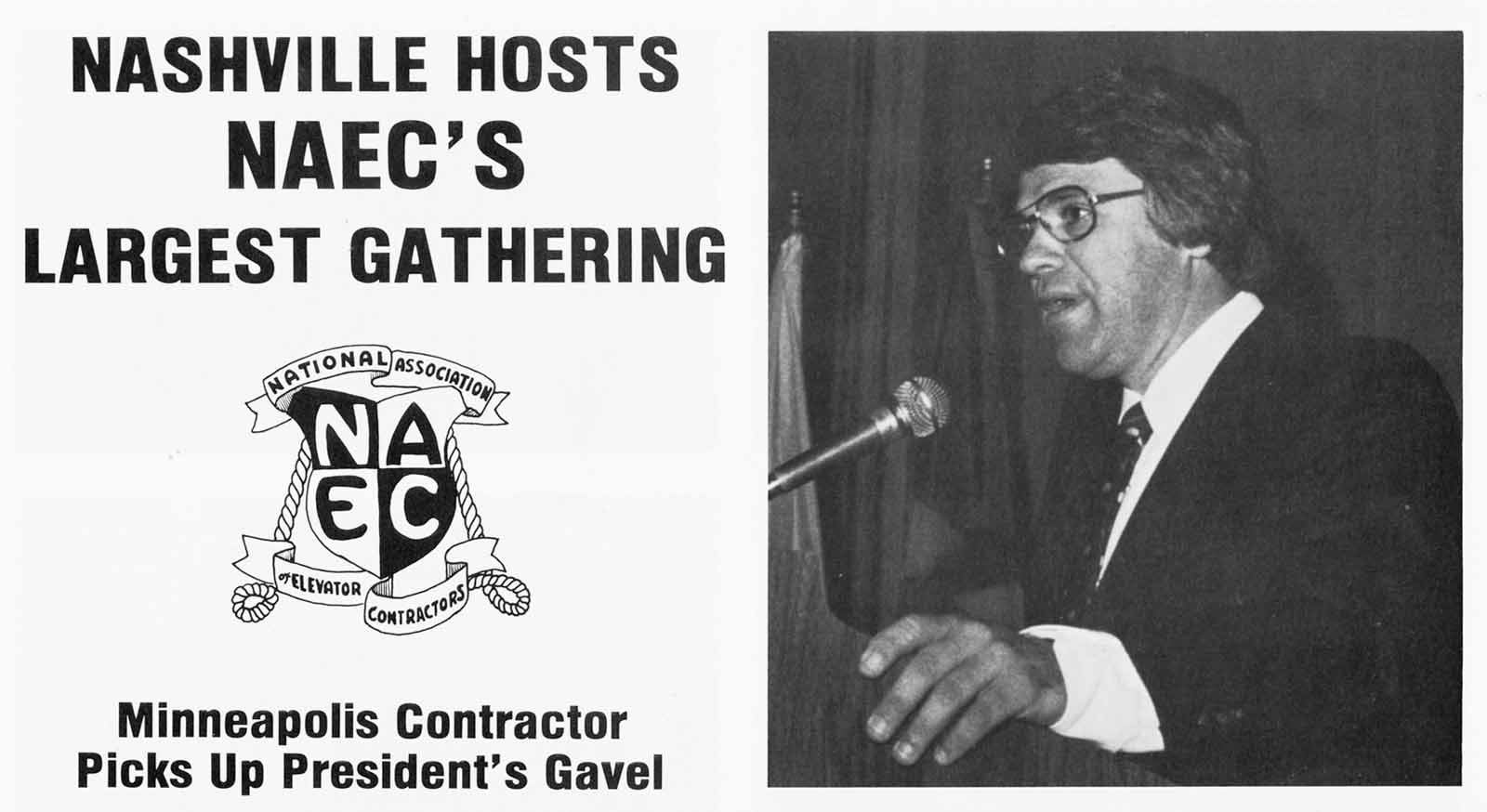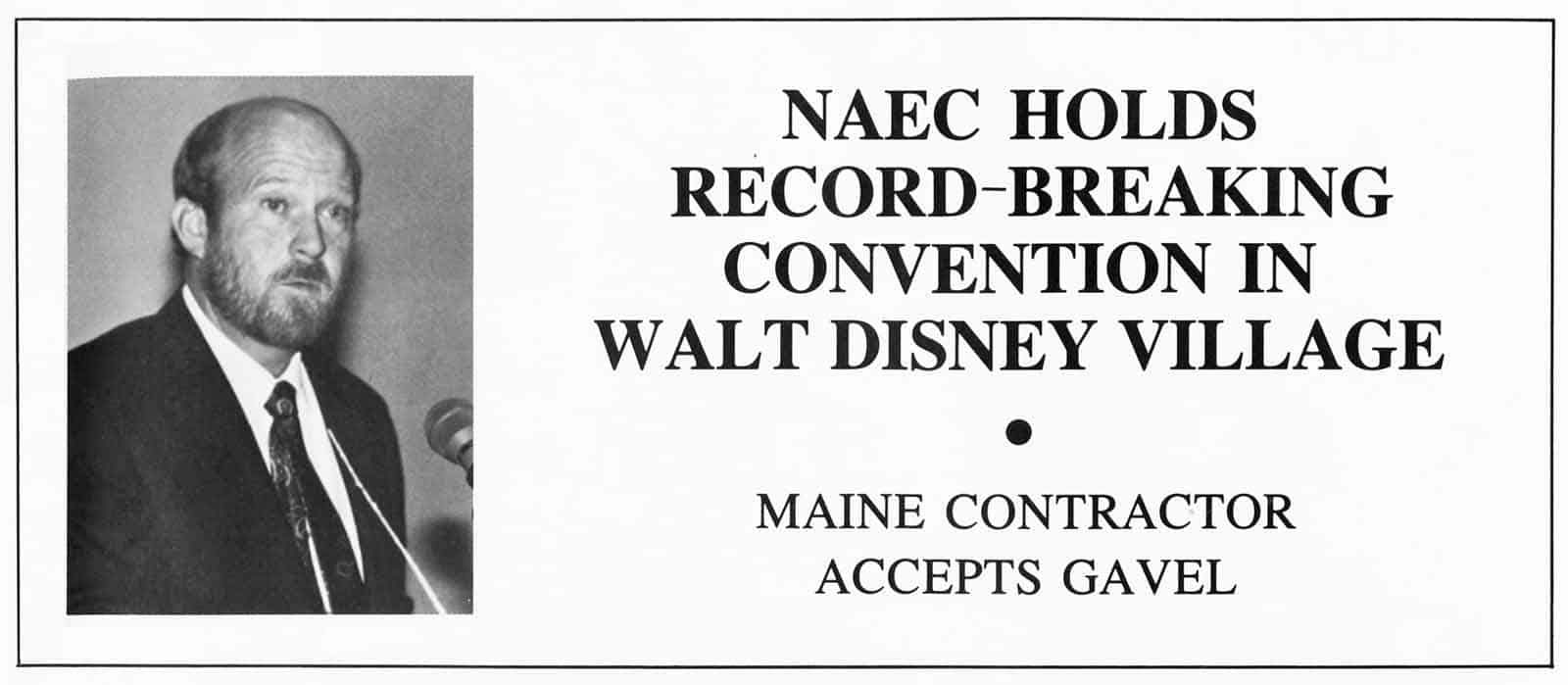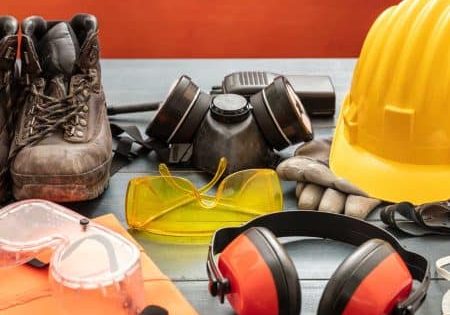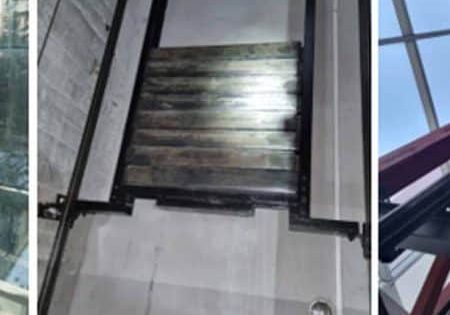The National Association of Elevator Contractors 1975-1999
Jun 1, 2024
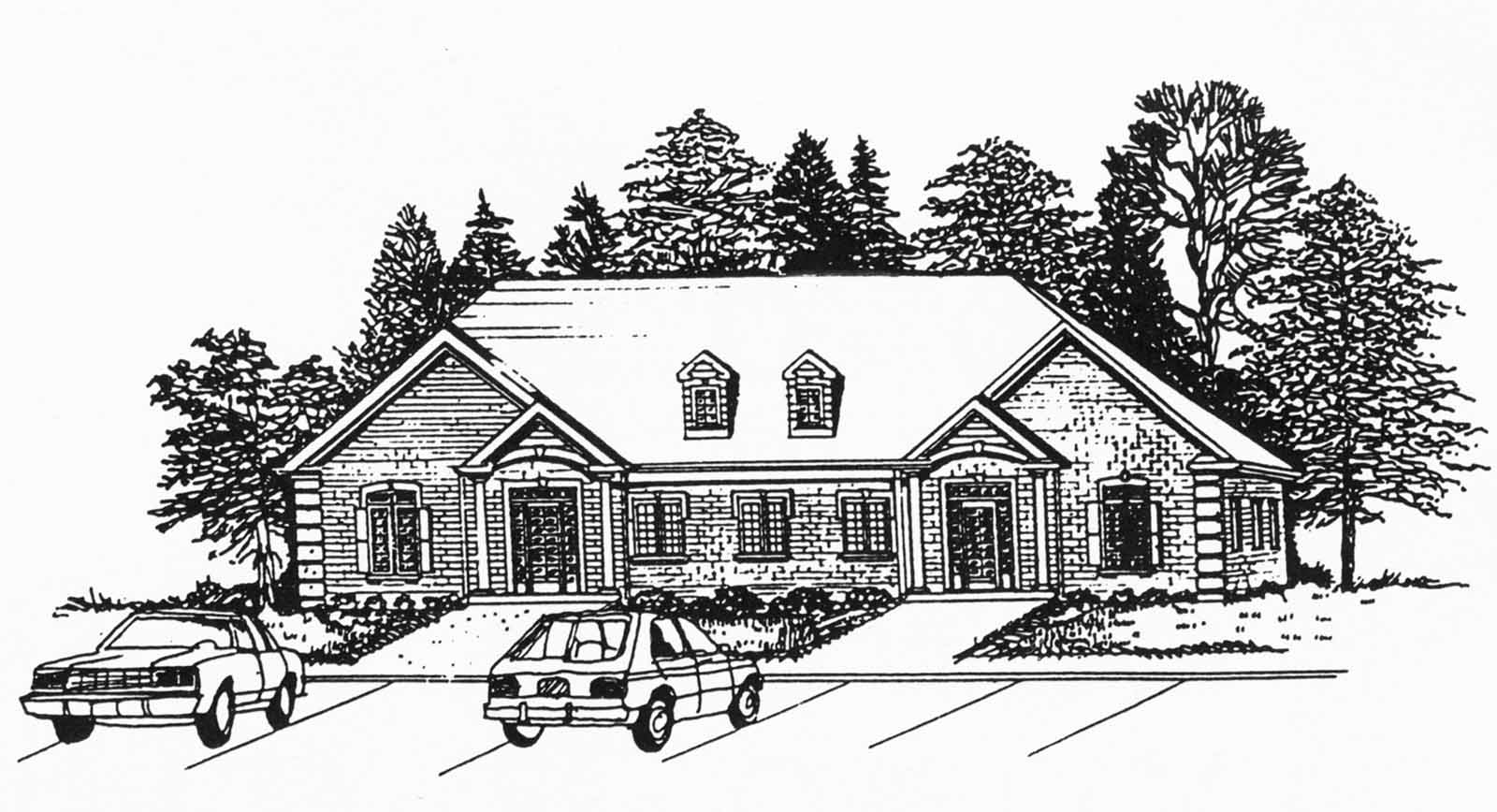
Expanding community
The National Association of Elevator Contractors (NAEC) opened the second phase of its history with a subtle, but important, change in nomenclature. During its first 25 years, the association’s membership of vertical-transportation (VT) contractors and suppliers were referred to, respectively, as “Active” and “Associate” members. In 1975, the NAEC made the (perhaps obvious) decision to adopt the simple membership designations of “Contractor” and “Supplier.”[1] Thus, the association’s membership categories become more transparent and inclusive through this simple act. This decision was accompanied by a change in the Constitution that allowed a supplier to serve as secretary or treasurer. These, and other efforts, allowed the NAEC to steadily expand its community throughout its second 25 years.
This expansion was evident in the continued success and growth of the annual conventions. During this period, accounts of NAEC meetings that regularly appeared in ELEVATOR WORLD featured similar headlines:
- “NAEC Holds Record Meet” (December 1976)
- “NAEC Holds Record Convention” (January 1978)
- “NAEC Holds Record Meet” (January 1979)
- “Largest Elevator Industry Assemblage” (January 1981)
- “Nashville Hosts NAEC’s Largest Gathering” (January 1984)
- “NAEC Hosts Largest Ever in Florida” (January 1986)
- “NAEC Holds Record-Breaking Convention in Walt Disney Village” (January 1988)
- “NAEC’s 44th Convention Sets Records in D.C.” (January 1994)
The growth in convention attendance reflected growth in membership. By 1984, the association had 447 members: 255 contractor, 150 supplier, 40 professional and two honorary members.[2] By 1991, this had increased to 596 members: 319 contractor, 219 supplier, 14 dual memberships, 38 professional, four subscription and two honorary memberships.[3] The appearance of “dual” members — companies that operated as contractors and suppliers — reflected the changing character of the VT commercial landscape. By 1994, the association had grown to 670 members: 344 contractor, 270 supplier, 40 professional and 16 dual members.[4] In fact, the first mention of a membership decline was found in an account of the 1996 convention when a net loss of 18 members was reported. This was attributed to ongoing trends in industry mergers and acquisitions.[5]
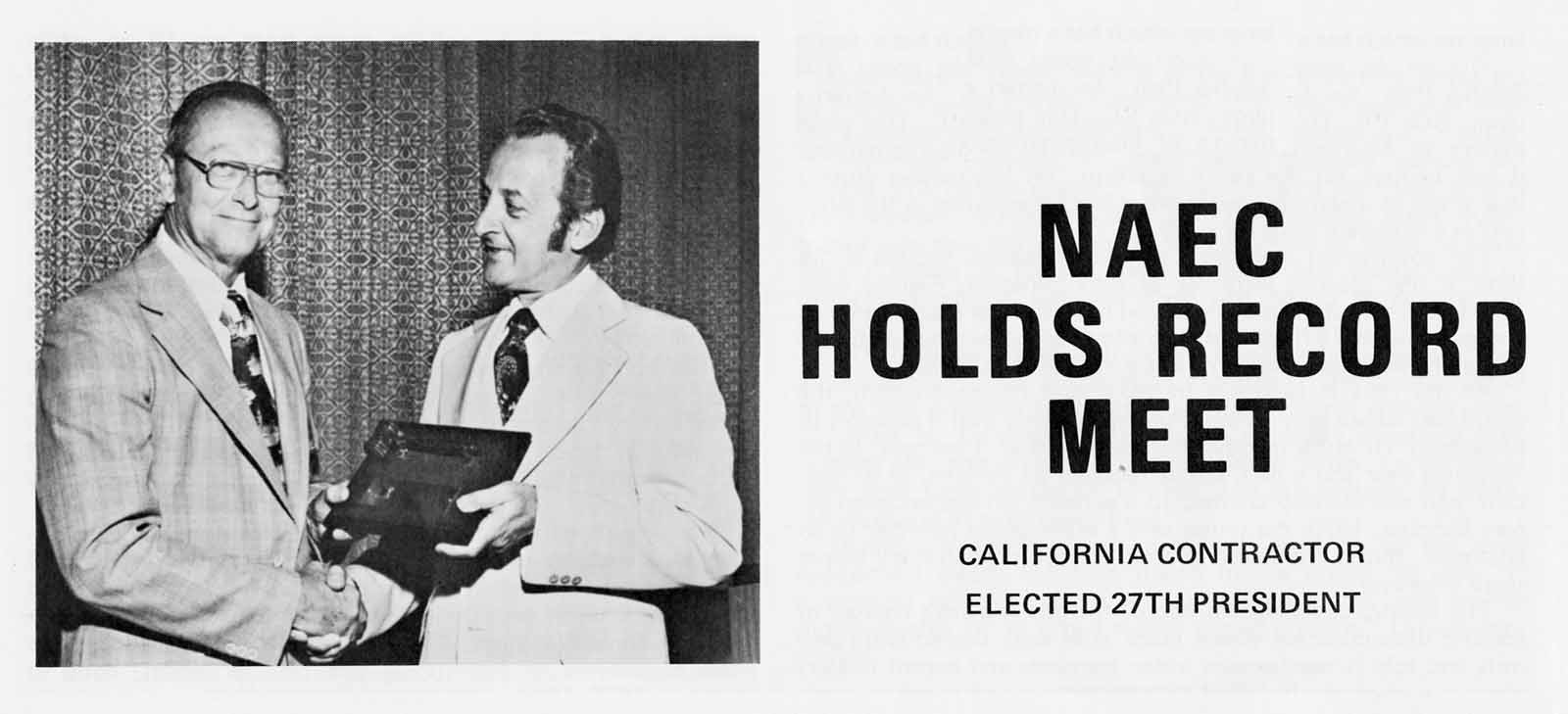
While membership statistics reveal overall trends in growth, numbers do not tell the whole story of any given community. While many professional groups consider and/or characterize themselves, metaphorically, as constituting a “family,” within the NAEC this was often the literal truth. A 1990 survey indicated that more than 50% of members considered their companies to be family businesses.[6] In fact, seminars on the challenges associated with running family-owned businesses were standard offerings at the association’s annual conventions and mid-year educational seminars. A representative example of these offerings was a presentation by Patricia A. Frishkoff (director, Family Business Programs, College of Business, Oregon State University) titled “What Makes a Family Business Work,” delivered at the 1990 convention. Not only did Frishkoff note that “a family business is the riskiest kind to be in — if it doesn’t work well you stand to lose the business and your family!” she also reported that the “chance of a second generation taking over is one in three; into a third generation the odds are one in six.”[6]
In addition to seminars offered by academics, human resource experts and business operations specialists, the NAEC also often leaned on the expertise of its members to “unpack” these critical issues. The 1993 convention featured a panel titled “Emphasizing the Family in the Family-Owned Business;” the panelists included Martha Hulgan (Elevator Maintenance & Repair Co., Inc., [EMR], Chattanooga, Tennessee), Richard “Rich” Dalvano (Barist Elevator Co., Deerpark, New York), Walt Herrmann Jr. (Homelift of America, Inc., Plumsteadville, Pennsylvania) and D. Gregory “Greg” Carlisle (Murphy Elevator Co., Inc., Louisville, Kentucky).[7] Hulgan, one of the few women VT company owners at the time, co-founded EMR in 1979 with her husband, Gordon “Bud” Hulgan Jr. In a 2012 interview, she described EMR as a “family business in every way. Each of our children worked in the company in some capacity from the time they could shovel mud while drilling a cylinder hole, to the time they started their own elevator companies or went to college.”[8] Carlisle also belonged to a select group in that he was a third-generation VT industry member. His grandfather, Lawrence G. Carlisle, was working for George C. Murphy when he founded the Murphy Elevator Co. in 1932, and he assumed the role of company president when Murphy retired in 1947. Greg’s father, Norman G. Carlisle, joined the company after World War II and succeeded his father as president. When Norman stepped down in 1992, Greg assumed the role of company president.

Of course, the concept of family is often associated with the equally powerful idea of home. For its first 25 years, NAEC had led a somewhat nomadic existence. The association’s first home, organized in 1951, was the office of Paul John Kern, located in the Chenoweth-Kern Elevator Service building in Des Moines, Iowa. In 1952, the office moved to St. Louis and the General Elevator Engineering Co. under the watchful eye of Ralph D. “Mac” McCaslin. For a brief period in 1956, the office was located in Point Clear, Alabama (across the bay from Mobile), before it returned to St. Louis later that same year. In 1967, the office moved to Washington, D.C. This was followed by a move to College Park, Maryland, in 1972. In 1974, the office moved to the Atlanta-metro area, where it has remained. However, this move, while providing stability with regard to geographic location, did not fully resolve the issue of a home for the NAEC.
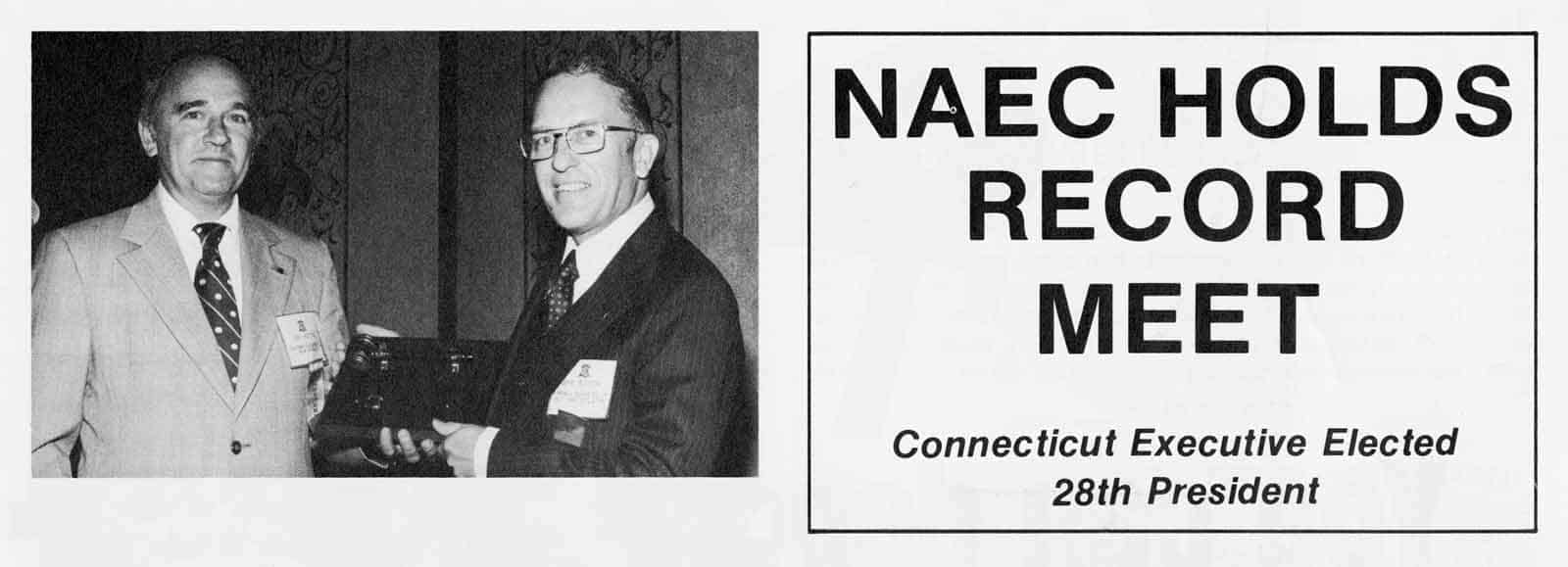
With the exception of when a member company served as a host for the executive offices, NAEC had always rented its office space. Although a leased space can “feel like home” — ask any long-time Manhattan apartment dweller — for many people it lacks a sense of permanence. This fact was at the heart of a debate that occurred during the 1977 convention:
“A proposition long discussed in both contractor and supplier group business meetings was the purchase of a permanent ‘home’ for the association executive offices in Atlanta. The suppliers, in particular, were not in favor of the expenditure, feeling an association ‘should not be in the real estate business.’”[9]
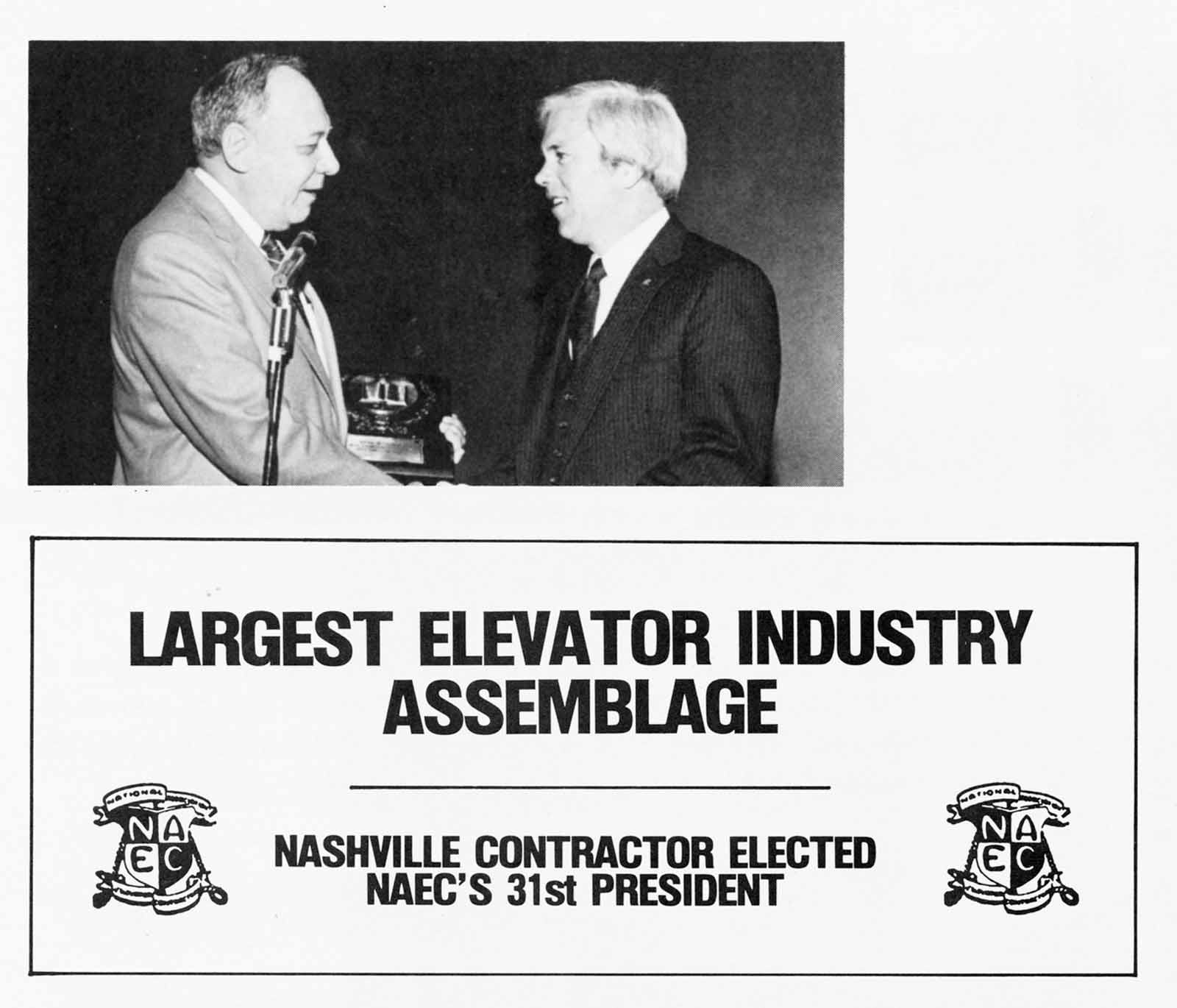
This particular debate about whether to pursue building or acquiring a permanent home was, however, first sidetracked and then eventually tabled by the suggested inclusion of an additional use for a permanent NAEC building:
“The proposal to include an ‘elevator industry museum’ in the building probably did much to ‘muddy the water.’ There were many questions concerning a museum — appropriate location to attract visitors, kind of visitors, overhead expense, supervision, kind of memorabilia and equipment to be solicited and displayed, etc. It was just too much to assimilate … and the venture was abandoned. A museum is something in which many industry members have expressed an interest for a decade or more. Each year that goes by, additional items of interest are lost to us. It seems that the question of an association home office building and a museum should be separated – not abandoned.”[9]
The lament regarding the fate of VT industry artifacts and history was likely voiced by EW founder William C. Sturgeon, who possessed a well-known love of history. Discussions about the need for a permanent home continued for the remainder of the 1970s, throughout the 1980s and finally ended in the early 1990s when, in April 1992, the association broke ground on its first permanent headquarters building, located in Conyers, Georgia.[10] When completed, the NAEC occupied 2,400 ft2 of the 3,600-ft2 building, which allowed for future expansion and the option of leasing the unoccupied space.
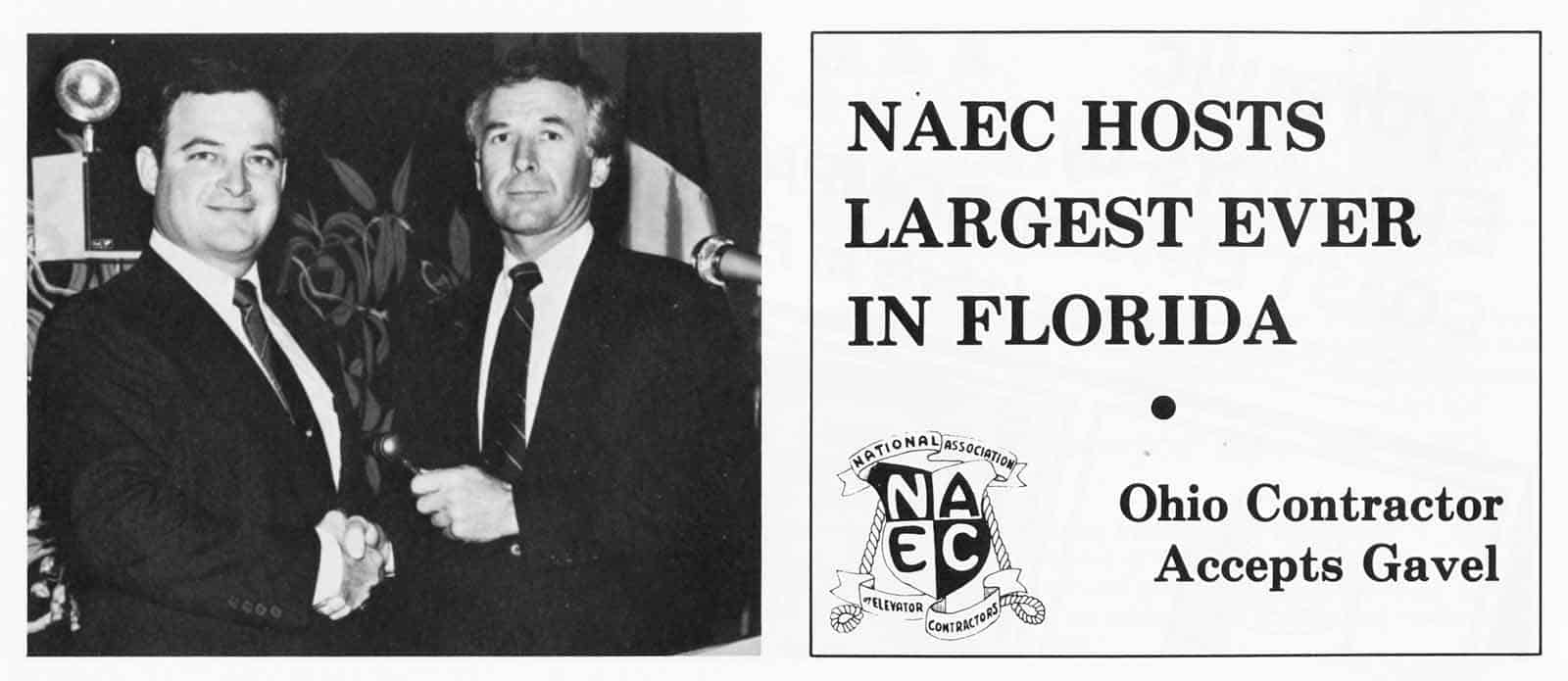
The expanded NAEC community was also closely connected with other VT communities, including the National Elevator Industry Inc. (NEII) and the International Union of Elevator Constructors (IUEC). These connections overlapped in 1982 during negotiations concerning the drafting of a new Standard Agreement. In a report published in EW, Lee Arnold (R&O Elevator Co., Inc., Minneapolis), chair of the NAEC Labor Committee, reminded members that: “Although most members of the NAEC are not members of the Multi-Employer Bargaining Group … NAEC does hold, collectively, a unit vote on the Negotiating Committee.”[11] He also reminded members that: “The independent sector of the industry employs, collectively, more than 40% of the IUEC work force in the country.”[11] To ensure that the association’s membership would be fully informed regarding ongoing events, he reported that his committee was “implementing a National Communication Network,” which would:
- Convey to all member companies significant developments during the negotiations
- Provide the membership with information regarding interim agreements, technical information and assistance legal information, (and)
- Upon finalization of a Labor Agreement, hold regional and local “pocket” meetings to explain the new Standard Agreement and its administration.[11]
In addition to working effectively with other members of the broader VT community, during this period the NAEC was also recognized by non-VT organizations as an important source of information on industry practices and standards.
In the summer of 1990, the association received a meeting request from the Occupational Safety and Health Adminisration (OSHA) to discuss perceived “problems with safety in elevator construction areas.”[12] The desire to meet was prompted by reports OSHA had received regarding alleged unsafe working conditions in Philadelphia. The meeting with Fred Anderson (deputy director of OSHA’s Office of Construction and Engineering) was organized by NAEC and occurred in August at the annual workshop of the National Association of Elevator Safety Authorities (NAESA). This setting allowed for the participation of a diverse group of industry representatives. Anderson presented a slide show illustrating problems found on Philadelphia construction sites, and he reported that, between 1981 and 1990, “57 elevator constructors had died in workplace accidents.”[12] The NAEC’s response to this presentation, supported by other industry members, was designed to educate and inform.
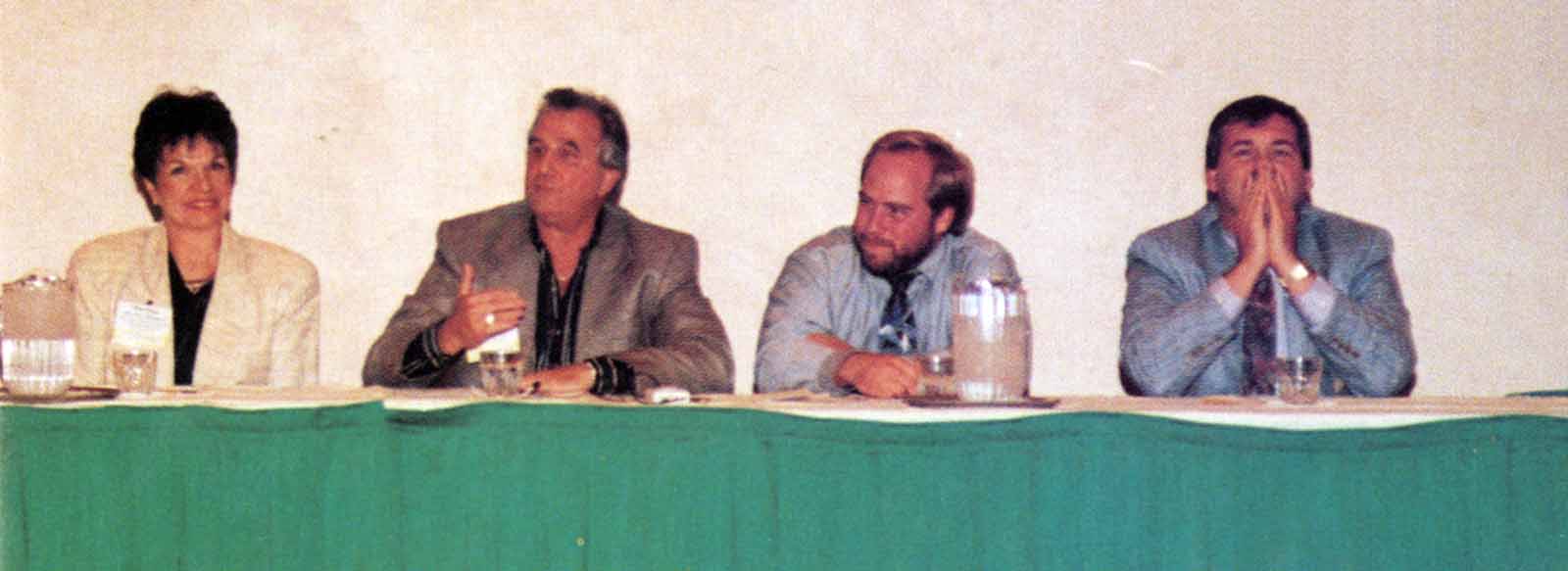
Meeting participants reminded Anderson that the context of the accident statistics he reported was an important factor, noting that, during the same time period, approximately 250 workers from other trades had died on construction sites. While a single death is one too many, this comparison reinforced the effectiveness of the industry’s commitment to safety. Anderson was also reminded that the primary group responsible for maintaining a safe workplace was the general contractors. Lastly, he was given a copy of the Field Employees’ Safety Handbook, “as an example of how conscious the industry is of the need for safety instruction among its workers.”[12] The meeting concluded with an agreement to continue conversations with OSHA and to provide, when possible, seminars on elevator workplace safety to general contractors at OSHA-sponsored events. Meeting participants included Steve McWilliams (NAEC executive director), R. Perry Burch (NAEC president, Automatic Elevator, Inc., Nashville), Marie McDonald (chairman, NAEC Safety Committee, McDonald Elevator Co., San Francisco), James O’Boyle (chairman, NEII Safety Committee, Dover Elevator Co., Memphis), Floyd “Bud” Rommel (NAESA), Edward A. “Ed” Donoghue (NEII Safety Committee, Edward A. Donoghue Associates, Salem, NY) and Ricia Sturgeon-Hendrick (EW).
The growth and expansion of the NAEC during its second 25 years occurred during the last quarter of the 20th century. The sense of enthusiasm and optimism that pervaded accounts of NAEC activities during this period highlights the overall health of the association and the VT industry as both looked toward the unknown world of a new century. Having first built a strong foundation and then effectively expanding and strengthening its community during its first 50 years, the NAEC was poised to embrace the challenges of the 21st century.
References
[1] “NAEC Holds Annual Management Seminar,” Elevator World (June 1975).
[2] “NAEC Visits Famed West Coast Resort for 35th Convention,” Elevator World (January 1985) 1991 convention
[3] “NAEC Celebrates 42nd Year at Miami Convention,” Elevator World (January 1992).
[4] Bob Caporale, “The Wonderful World of NAEC: 45th Convention Elects New President Mike Barbee,” Elevator World (December 1994).
[5] “NAEC 47th Convention in Chicago,” Elevator World (January 1997).
[6] “Baltimore Engineer Elected 41st President of NAEC in the City of Stars,” Elevator World (January 1991).
[7] “NAEC’s 44th Convention Sets Records in D.C.,” Elevator World (January 1994).
[8] Elizabeth Pate, “Martha Hulgan Speaks about Starting a Business During Recession, Work Ethics, VIEEW and Family,” Elevator World (November 2012).
[9] “NAEC Holds Record Convention,” Elevator World (January 1978)
[10] “NAEC Builds New Offices,” Elevator World (June 1992).
[11] Jack Fraser & Lee Arnold, “NAEC Notes: IUEC Contract Negotiations,” Elevator World (April 1982).
[12] “NAEC Notes: NAEC Responds to OSHA Meeting Request,” Elevator World (November 1990).
Also Read: The National Association of Elevator Contractors 1950-1974: Building Community
Get more of Elevator World. Sign up for our free e-newsletter.
